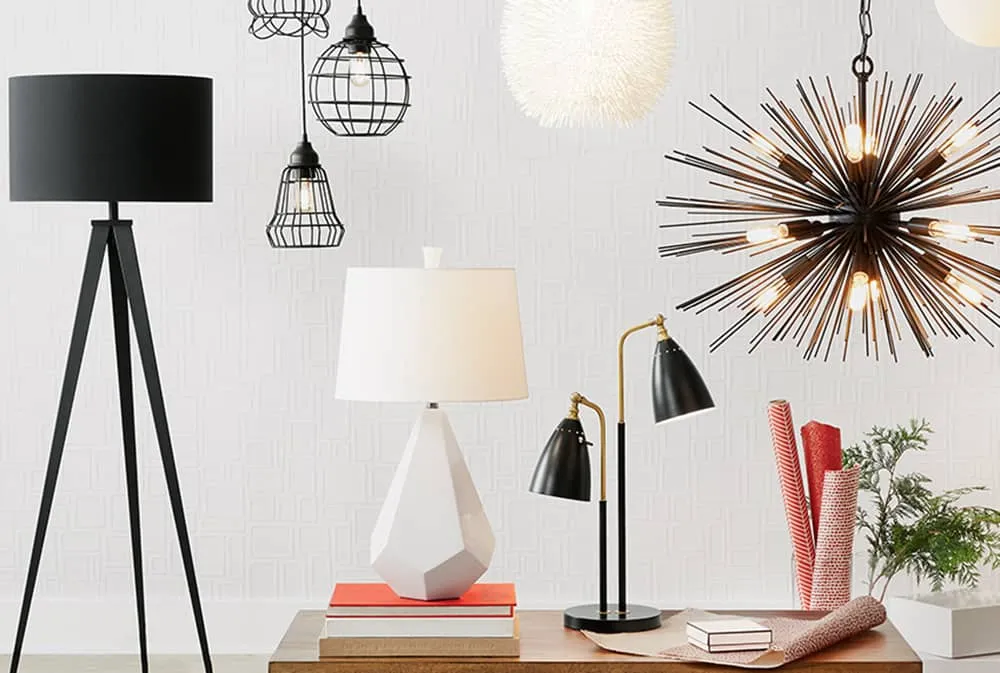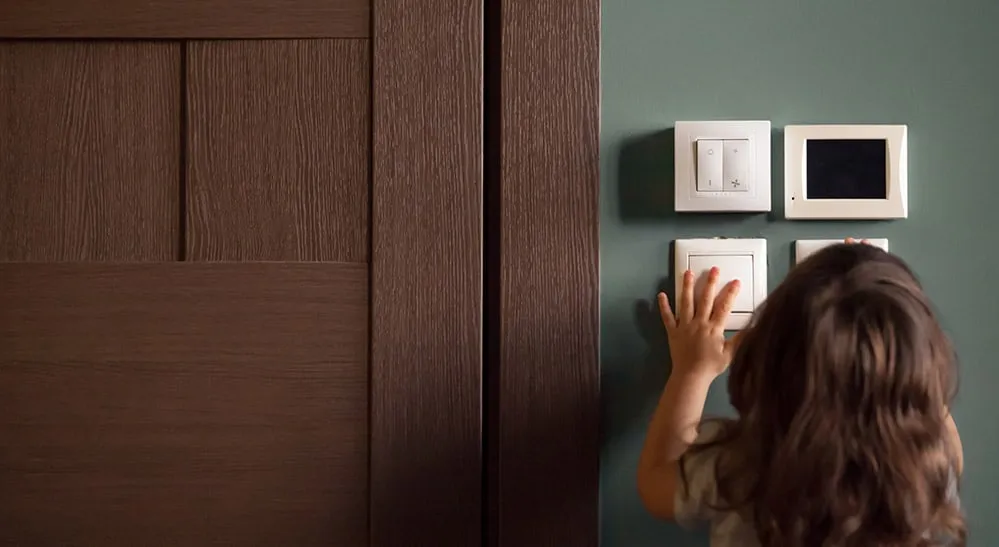
You’ve probably wondered if smart light bulbs are actually worth the current craze surrounding them. Maybe you even considered getting some, but you’re not sure whether they are compatible with your current light fixtures. Well, rest easy because here’s the inside scoop on everything you need to know about smart light bulbs and what fixtures can be used.
Can smart light bulbs be used in any fixtures? Smart light bulbs can be used in any fixture where a regular bulb was previously used, as long as the base of the bulb matches the socket size of the fixture. Smart bulbs are not made for every socket size, but the most common sizes are available, including E12 and E26.
Smart bulbs are fairly recent innovations in home automation and IoT which allow users to remotely control different lighting functions within their home over various wireless networks. These may include features like light intensity, color, and timing.
However, there’s a lot more to the smart light bulb. Here you’ll find out how to use them in multiple fixtures, which particular fixtures support smart light bulbs, and take a look at both sides of the smart bulb vs smart switches argument.
Which Fixtures Can Accommodate Smart Bulbs?
Smart light bulbs are more or less like regular light bulbs when you come down to the old-school technical aspects like wattage, voltage, CRI, and finish. Also, when it comes to fittings, shapes, sizes, and functions, smart bulbs operate in many similar ways to any other bulb you can think of.
They even come in varying wattages, just like the traditional incandescent light bulbs. For this reason, smart bulbs can be used in light fixtures and lamps of various kinds, so long as the specifications of the bulb match those of the fixture. And, that is usually the case.
The operation of a smart bulb depends on the fixture in which it is used, and the purpose of lighting. Smart bulbs can be used in lamps, just like regular bulbs, or connected in groups, such as in chandeliers or ceiling fan lights. Some fixture examples which work well with smart bulbs include;
- Dual lamps
- Chandeliers
- Ceiling fans
- Recessed lights
- Pendant lights
- Outdoor fittings e.g. Yard lights
- Security lights
- Floodlights, etc
Really, you can name just about any place where a regular screw-in bulb is used in your house. You name it, there is probably a smart bulb that you can use. There are a few applications where I haven’t seen smart bulbs that would work. These places typically in high-temperature settings, like an oven or microwave. I was going to include aquariums, but there are smart lights made for those!
An important thing to remember is that most smart bulbs have an internal dimming mechanism. They are not designed to be used with a dimmer switch. Due to this, when you use a smart bulb on any fixture that is connected to a dimmer switch, they will not function correctly. This is due to the clash between the internal dimmer electronics and the external dimmer switch, which may lead to a strobe-like effect when dimmed with the external dimmer switch. If you would like to learn more about using dimmer switches with smart bulbs read my article Do Philips Hue Bulbs Work with Dimmer Switches?
Multiple Smart Bulbs in One Fixture
After purchasing a set of smart light bulbs for a particular fixture, many people are faced with the trouble of getting them to work together. I get it. Who wants to have to turn each light on individually, especially when your used to turning all of the lights on with the flip of a switch? The good news is that it is an easy problem to solve.
Getting multiple smart bulbs to turn on and off simultaneously, as well as perform other functions, requires more than connecting them to the same switch. It takes a level of automation that groups the smart bulbs and assigns the group to one controller.
The most commonly used methods for achieving this is through the use of certain smart apps, such as Alexa, Smart Things, and probably also your favorite app to use. If you are able to control the smart bulb from the said app, then you are most often able to put smart bulbs, and other smart devices, into groups.
Creating a group will create a single on/off switch in the app, and it will look a lot like the on/off for a single bulb. Each time you “flip” the switch in the app, all the bulbs and devices will turn on or off.
Similar to creating groups, there is the option to create scenes. A scene gives you a little more control over each bulb and device in that given scene. Within a scene you can adjust the brightness, color and any other option the bulb has. Use them for specific events, like movie night or game time or for certain times of the day like waking up or going to bed.
Another way to get around this is by not actually using smart bulbs. Wait, I know you’re thinking, “What? This article is all about smart bulbs!” You’re right, but I want to make sure you know your options, and you have a lot when it comes to smart bulbs and home lighting.
Consider using regular light bulbs with a smart switch instead. Connecting the fixture to a smart switch and installing regular light bulbs can still offer a similar smart lighting experience. You will be able to turn the lights on and off, as well as be able to dim them to the desired brightness.
Do You Need a Special Lamp for Smart Bulbs?
Smart bulbs can lighten up your bedroom, kitchen, or any other room in your house as long as they are compatible with the light fixture. But when it comes to lamps such as bedside lamps, gooseneck lamps, or desk lamps, do you need a special lamp to install smart bulbs?
Do You Need a Special Lamp for Smart Bulbs? You do not need a special lamp to use a smart bulb. A regular lamp will operate correctly with a smart bulb installed. Lamps are designed to work with 60-watt incandescent bulbs. Smart bulbs only use around 7 to 10 watts, putting them well below the max wattage and far from any electrical risks.
As discussed earlier, smart light bulbs come in a wide variety of shapes and sizes. You can find the size and wattage compatible with your lamp without having to purchase a special lamp for it. This works just as well as any regular light bulb and saves you the hassle of looking for a new lamp.
Popular brand names such as Philip Hue and Lifx have burst through the market with a wide array of fascinating smart products with different kinds of configurations. If your lamp uses the standard E12 or E26 socket sizes, you are sure to find a smart bulb capable of use in your lamp. Smart bulbs work in a stand-alone fashion, and most work perfectly in pairs or multiples if your lamp has more than one bulb.
Smart Bulbs or Smart Switch?
The idea of smart lighting isn’t new. The technology has been around for quite some time now. Over time, new products were developed and older models made way for even more advanced innovations. Now, people have a wider range of options in smart lighting than was available just a few years ago.
To this end, one of the arguments that keeps popping up is whether or not smart bulbs are a better choice than smart switches when considering switching to a smart home setup. Let’s take a brief look at these two, with respect to their pros and cons.
What is a Smart Switch?

A smart switch is to a light switch what a smart bulb is to a light bulb. Smart switches can function basically as regular light switches, and they can also be remotely controlled over your wireless network, z-wave, or zig-bee, depending which type of switch you choose.
Most smart switches also offer similar functions as smart bulbs, such as:
- Voice control, which make it possible to control your light fixtures even without using your wireless device.
- Remote operation with your smartphone even when you’re away from home.
- They allow you to create time-based lighting schedules that best suit your lifestyle.
- Control the mood of you home by controlling the color scheme and light intensity.
Smart Bulb Vs Smart Switches
Let’s try to put this debate to rest. We’ll play out the pros and cons of each before you and decide which smart home innovations are better suited for you, smart bulbs, or smart switches?
Smart Bulb
Pros
- Relatively easy to set up, just simply screw in the bulb and connect it to your wireless device.
- Can be used with most regular light fixtures.
- An individual smart bulbs is cheaper than a smart switch.
- Some higher-end bulbs offer features such as motion tracking, doubling as security cameras, and audio streaming over Bluetooth connections.
Cons
- Even though there is a wide range of available shapes and fittings, there are still some light fixtures that cannot accommodate smart bulbs.
- Smart light bulbs do not function well with external dimmer mechanisms like an in-wall dimmer switch.
- Scheduled lighting features do not work if the wall switch is turned off.
Smart Switch
Pros
- With smart switches, you can make use of regular light bulbs.
- Switches can be manually turned on/and off.
- Offer a different range of customization options than smart bulbs.
- Can save money over smart bulbs when used to control groups of bulbs.
- Smart switches can power other devices than a light bulb, such as a ceiling fan.
Cons
- Smart switches are pricier than smart bulbs
- Smart switches may require some wiring.
- Cannot control certain features on regular bulbs like the color scheme and light intensity.
So the winner is…well, there isn’t really a winner. It depends on the situation for which is a better option to choose. Each option has some features in its favor and ultimately the choice is up to you. Looking over the pros and cons of each carefully, it seems the smart bulb is the more versatile, where as a switch is good for controlling groups of bulbs or when you would like the option to manually turn on and off lights.
The difficulty with installing smart switches is a major turn-off to some buyers. It’s not too difficult, but I understand if you don’t want to mess with electrical wires. There are a few options that don’t require any wiring, if that’s the issue. Check out the Philips Hue Smart Button

Here’s another consideration: most people are already accustomed to controlling their lights manually with the aid of the wall switch and rarely use a smart switch even when it’s available. So why spend so much money on technology you’ll barely use? There are certain demographics that are slow to adopt new technology.
In Conclusion…
With smart bulbs like the Wyze Bulb and Philips Hue pushing the envelope, other manufacturers are being forced to either up their game or go out of business. Every day new ideas and concepts are being tested, all geared towards giving you the ultimate smart home experience.
Smart bulbs can be used just about anywhere a regular light bulb was used, and who knows what new technology tomorrow may bring. Tech is moving so quickly, but I think smart bulbs are here to stay for some time. The future is a mystery, but we have many options within our reach to illuminate the present (Pardon the pun).
